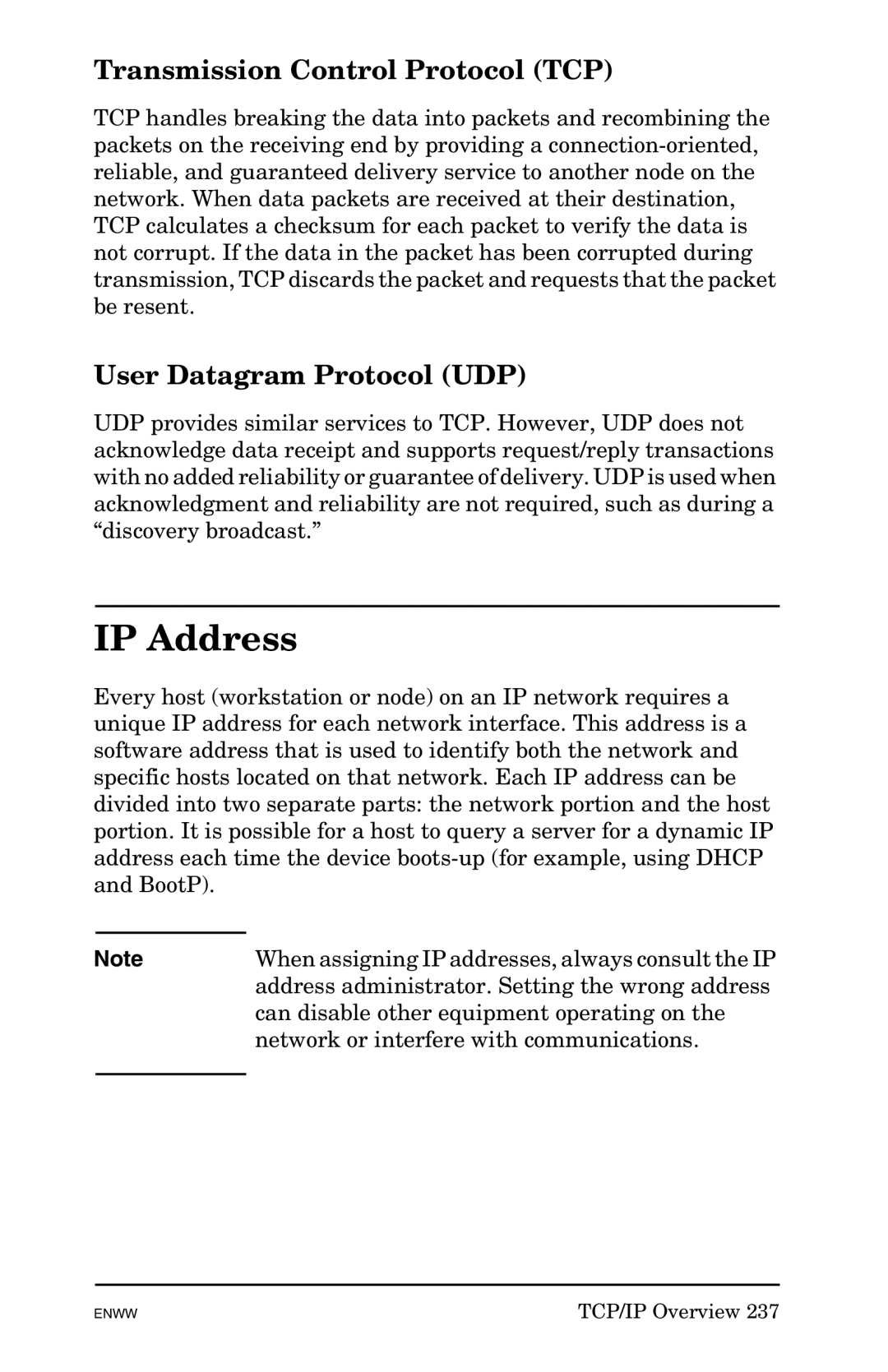
Transmission Control Protocol (TCP)
TCP handles breaking the data into packets and recombining the packets on the receiving end by providing a
User Datagram Protocol (UDP)
UDP provides similar services to TCP. However, UDP does not acknowledge data receipt and supports request/reply transactions with no added reliability or guarantee of delivery. UDP is used when acknowledgment and reliability are not required, such as during a “discovery broadcast.”
IP Address
Every host (workstation or node) on an IP network requires a unique IP address for each network interface. This address is a software address that is used to identify both the network and specific hosts located on that network. Each IP address can be divided into two separate parts: the network portion and the host portion. It is possible for a host to query a server for a dynamic IP address each time the device
Note | When assigning IP addresses, always consult the IP |
| address administrator. Setting the wrong address |
| can disable other equipment operating on the |
| network or interfere with communications. |
|
|
ENWW | TCP/IP Overview 237 |
